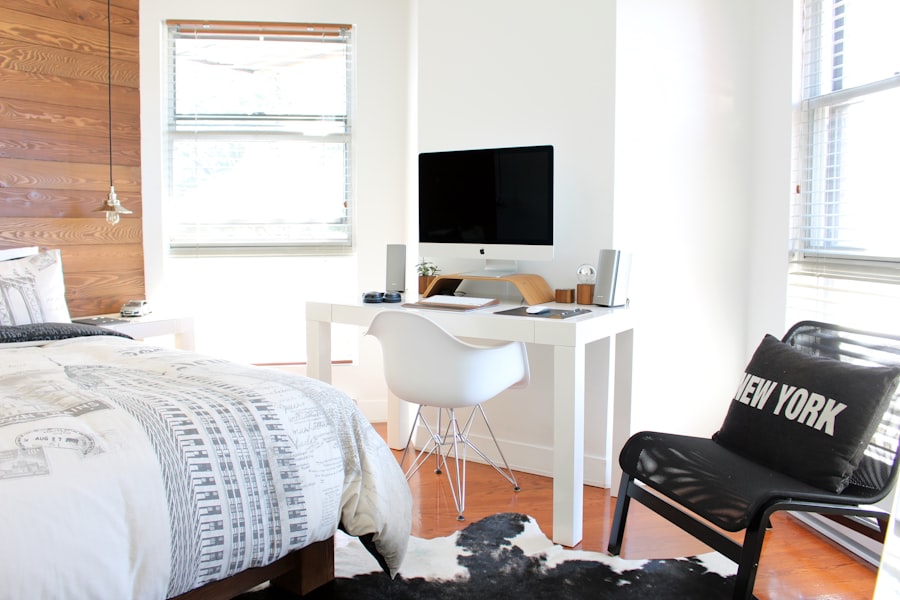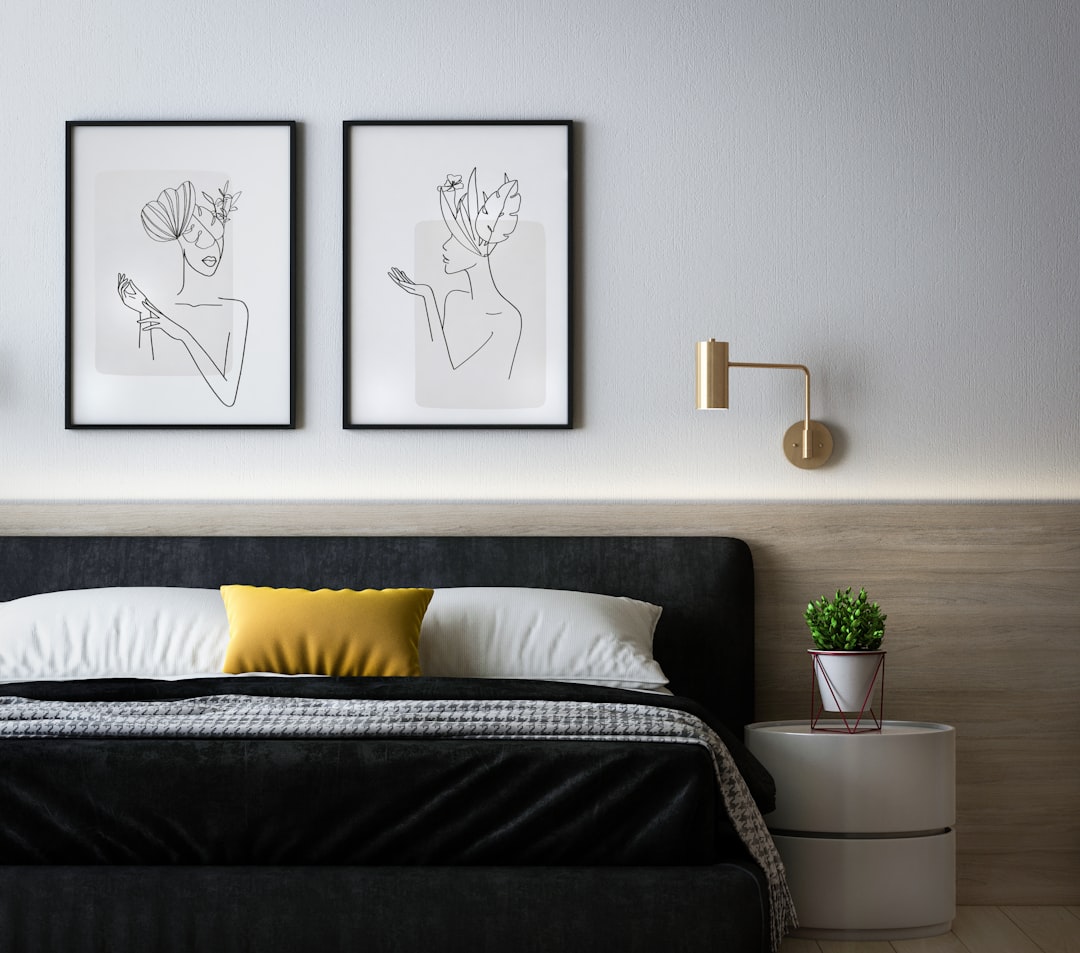ADHD, or Attention Deficit Hyperactivity Disorder, is a neurodevelopmental disorder that affects both children and adults. Individuals with ADHD often struggle with organization, time management, and maintaining focus on tasks. These challenges can significantly impact their ability to keep their living spaces clean and organized, including their bedrooms. The symptoms of ADHD, such as forgetfulness, distractibility, and difficulty with prioritizing tasks, can make it overwhelming to tackle cleaning and decluttering projects. Additionally, individuals with ADHD may struggle with impulsivity, which can lead to difficulty in making decisions about what items to keep or discard when decluttering.
Furthermore, individuals with ADHD may also struggle with executive functioning skills, such as planning and organizing. This can make it challenging to create and stick to a cleaning routine, leading to a cycle of disorganization and clutter in the bedroom. It’s important to recognize that the impact of ADHD on bedroom cleaning is not due to laziness or lack of motivation, but rather a result of cognitive differences that require understanding and support.
Key Takeaways
- ADHD can impact a person’s ability to maintain a clean bedroom due to challenges with organization, focus, and time management.
- A tailored bedroom cleaning routine for individuals with ADHD should be simple, flexible, and broken down into small, manageable tasks.
- Organizing and decluttering tips for ADHD-friendly bedrooms include using storage solutions, minimizing visual distractions, and creating designated spaces for items.
- Visual aids and checklists can help individuals with ADHD stay on track and remember cleaning tasks, while also providing a sense of accomplishment.
- Time management techniques such as setting timers, breaking tasks into smaller increments, and scheduling regular cleaning sessions can be beneficial for individuals with ADHD.
Creating a Bedroom Cleaning Routine Tailored to ADHD
Creating a bedroom cleaning routine tailored to individuals with ADHD requires understanding their unique challenges and finding strategies to support their needs. One effective approach is breaking down the cleaning tasks into smaller, manageable steps. Instead of trying to tackle the entire bedroom at once, individuals with ADHD can focus on one specific area or task at a time, such as decluttering the closet or organizing the bedside table. This approach can help prevent feeling overwhelmed and increase the likelihood of completing the task successfully.
In addition, incorporating regular short cleaning sessions into the daily routine can be more manageable for individuals with ADHD than setting aside large blocks of time for cleaning. For example, setting a timer for 10-15 minutes each day to tidy up the bedroom can make the task feel less daunting and more achievable. This approach also aligns with the ADHD-friendly strategy of breaking tasks into smaller, more manageable chunks. By incorporating these strategies into a tailored cleaning routine, individuals with ADHD can feel more empowered and successful in maintaining a clean and organized bedroom.
Organizing and Decluttering Tips for ADHD-Friendly Bedrooms
Organizing and decluttering can be particularly challenging for individuals with ADHD due to difficulties with decision-making and prioritizing tasks. To make the process more manageable, it can be helpful to start with small, specific goals. For example, instead of attempting to declutter the entire bedroom at once, individuals with ADHD can focus on decluttering one drawer or shelf at a time. Breaking down the task into smaller steps can make it feel less overwhelming and increase the likelihood of success.
Another helpful tip is to create designated spaces for specific items in the bedroom. This can help individuals with ADHD maintain organization and reduce clutter. For example, having a designated spot for shoes, books, or clothing can make it easier to keep the bedroom tidy. Additionally, using storage solutions such as bins, baskets, and shelves can help keep items organized and easily accessible. By implementing these organizing and decluttering tips, individuals with ADHD can create a more functional and manageable bedroom environment.
Utilizing Visual Aids and Checklists for Cleaning
| Visual Aid/Checklist | Effectiveness | Usage Frequency |
|---|---|---|
| Color-coded cleaning supplies | High | Daily |
| Cleaning checklist | Medium | Weekly |
| Before and after photos | Low | Monthly |
Visual aids and checklists can be powerful tools for individuals with ADHD to stay on track with cleaning tasks in the bedroom. Visual aids, such as color-coded labels for storage bins or drawers, can help individuals easily identify where items belong and maintain organization. Additionally, using visual reminders, such as sticky notes or visual schedules, can help individuals remember specific cleaning tasks and stay focused on completing them.
Checklists are also valuable tools for individuals with ADHD to break down cleaning tasks into manageable steps and track their progress. Creating a checklist of daily or weekly cleaning tasks for the bedroom can provide a clear roadmap for what needs to be done and help individuals stay organized. Checklists can also serve as a visual cue to remind individuals of the tasks they need to complete, reducing the likelihood of forgetting or becoming overwhelmed by the cleaning process.
Implementing Time Management Techniques for Cleaning
Time management is a common challenge for individuals with ADHD, making it important to implement effective techniques for managing cleaning tasks in the bedroom. One helpful strategy is using timers to break cleaning tasks into manageable increments of time. Setting a timer for 10-15 minutes for each specific task can help individuals stay focused and prevent feeling overwhelmed by the overall cleaning process.
Another effective time management technique is using a scheduling system to allocate specific times for cleaning tasks throughout the week. For example, designating certain days for laundry, dusting, or vacuuming can help individuals create a consistent routine for maintaining a clean bedroom. By implementing these time management techniques, individuals with ADHD can better manage their cleaning responsibilities and reduce feelings of stress or anxiety related to maintaining a tidy living space.
Incorporating Sensory-Friendly Cleaning Tools and Supplies

Sensory sensitivities are common among individuals with ADHD, making it important to consider sensory-friendly cleaning tools and supplies when maintaining a clean bedroom. For example, using lightweight and ergonomic cleaning tools can make it easier for individuals with ADHD to handle tasks such as dusting or vacuuming without feeling overwhelmed by heavy or cumbersome equipment. Additionally, using unscented or hypoallergenic cleaning products can help reduce sensory overload for individuals who are sensitive to strong smells or chemicals.
Creating a comfortable and sensory-friendly environment in the bedroom can also support individuals with ADHD in maintaining cleanliness. Soft lighting, comfortable seating, and calming decor can contribute to a more inviting space that encourages individuals to engage in cleaning tasks without feeling overwhelmed by sensory stimuli. By incorporating sensory-friendly cleaning tools and creating a comfortable environment in the bedroom, individuals with ADHD can feel more at ease while managing their cleaning responsibilities.
Seeking Support and Accountability for Maintaining a Clean Bedroom
Maintaining a clean bedroom can be challenging for individuals with ADHD, making it important to seek support and accountability from others. Enlisting the help of family members or roommates can provide valuable assistance in managing cleaning tasks and maintaining organization in the bedroom. Collaborating with others to create a shared cleaning schedule or divide specific tasks can help distribute the workload and reduce feelings of overwhelm.
Additionally, seeking support from professional organizers or cleaning services can provide individuals with ADHD with valuable guidance and assistance in creating an organized and functional bedroom environment. Professional organizers can offer personalized strategies for decluttering and organizing the bedroom, while cleaning services can provide regular maintenance to ensure the space remains tidy and inviting.
In conclusion, understanding the impact of ADHD on bedroom cleaning is essential for developing tailored strategies to support individuals in maintaining a clean and organized living space. By creating a customized cleaning routine, implementing organizing and decluttering tips, utilizing visual aids and checklists, implementing time management techniques, incorporating sensory-friendly tools and supplies, and seeking support from others, individuals with ADHD can feel empowered to manage their cleaning responsibilities effectively. With the right strategies and support in place, maintaining a clean bedroom can become a more manageable and achievable task for individuals with ADHD.
Looking for more resources on managing ADHD? Check out this informative article on ADHD testing and diagnosis at ADHD Testing. Understanding the process of testing and diagnosis can provide valuable insights into managing ADHD symptoms and finding effective strategies for everyday challenges. Whether you’re looking for information on testing or seeking support for a loved one, this article offers valuable guidance.
FAQs
What is ADHD?
ADHD stands for Attention Deficit Hyperactivity Disorder, a neurodevelopmental disorder that affects both children and adults. It is characterized by symptoms such as inattention, hyperactivity, and impulsivity.
Why is a bedroom cleaning checklist helpful for individuals with ADHD?
Individuals with ADHD often struggle with organization and time management, making it difficult for them to stay on top of household tasks such as cleaning. A bedroom cleaning checklist can provide a structured and visual guide to help them break down the cleaning process into manageable steps.
What should be included in an ADHD bedroom cleaning checklist?
An ADHD bedroom cleaning checklist should include specific tasks such as making the bed, picking up clutter, dusting surfaces, vacuuming or sweeping the floor, and organizing belongings. It should also break down each task into smaller, actionable steps to make the process more manageable.
How can a bedroom cleaning checklist be tailored to accommodate ADHD symptoms?
To accommodate ADHD symptoms, a bedroom cleaning checklist can include visual cues, such as color-coding or using pictures, to help individuals with ADHD stay focused and on track. It can also incorporate timers or alarms to help with time management and staying on task.
What are some tips for using a bedroom cleaning checklist effectively with ADHD?
Some tips for using a bedroom cleaning checklist effectively with ADHD include breaking tasks into smaller, manageable steps, setting realistic time limits for each task, and providing rewards or incentives for completing the checklist. It can also be helpful to establish a consistent cleaning routine to create a sense of structure and predictability.














